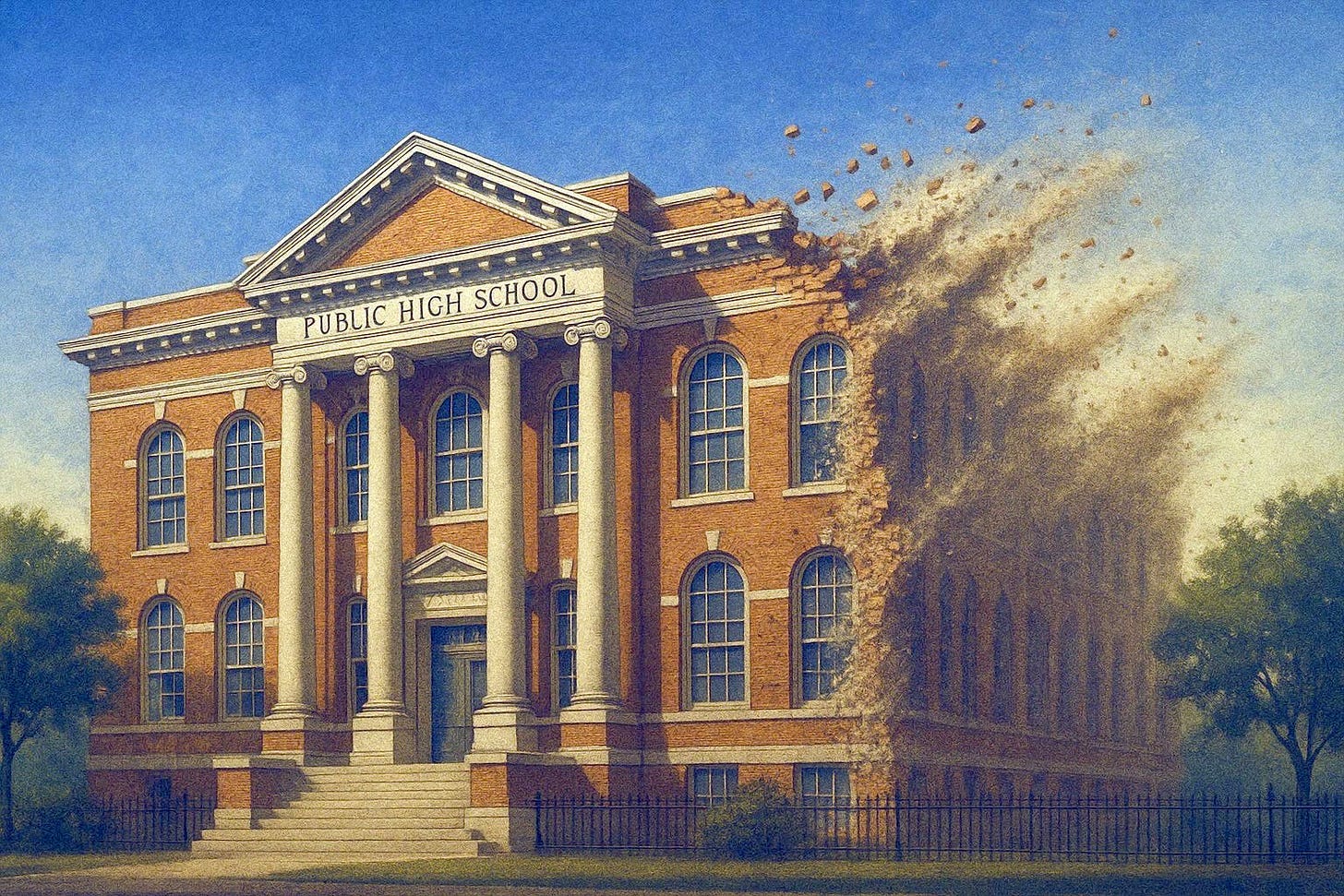How Hobson v. Hansen Shaped Our World
One last thing before I say goodbye for now
I have a new post up on the Center for Educational Progress. If you like my writing here, you should read it—it is certainly the highest-effort research project I have ever undertaken, and it may be the most important topic I’ve covered. Hopefully it’s long enough to tide you over for a bit, because I likely won’t be around for most of the next year. Not by choice—professional obligations. I’ll miss everything about this.
If you’re a paid subscriber to Tracing Woodgrains, first, I deeply appreciate your support, and second, don’t worry—I’ll be pausing payments for now so you won’t be charged further.
I’ll be back and writing full-time next summer.
Until then.
In Washington, D.C.’s history, there were three superlative predominantly black public schools. Two of them were destroyed, one by negligence, one by malice. The third was almost stillborn, strangled in its infancy and neglected in its adolescence, but it persisted.
Center for Educational Progress is a reader-supported publication. To receive new posts and support my work, consider becoming a free or paid subscriber.
The first, Dunbar High School, stands out as the crown jewel. From 1870 to 1955, it was Washington, D.C.’s only academic high school for black students—the first and best public black high school in the nation. Its alumni include Charles R. Drew, a prominent surgeon and researcher; William H. Hastie, the first black federal judge; Charles Hamilton Houston, who was dean of Howard University Law School and NAACP first special counsel; and many other black leaders of the late 19th and early 20th centuries. A school still bears its name, but it is not the school it once was.
The second, Amidon Elementary School, was built in 1960 as part of an urban renewal project. At the peak of the city’s white flight, it was one of the only schools in the city to maintain a truly integrated student population over several years. It used phonics to teach reading and focused on basic skills, against the popular guidance in education schools of its day. It lasted seven years before being dismantled—not because it failed, but because it worked. The people who dismantled it won a Medal of Achievement at the National Laboratory for the Advancement of Education for their trouble. It has since been almost forgotten to history.
The third, Benjamin Banneker High School, was the subject of a bitter fight, multiple failed votes, and the resignation of arguably the district’s best superintendent in modern history before the school board allowed its creation in 1980. For more than a decade afterwards, the board looked at it with suspicion and starved it of funding, including denying it readily available federal funds. It now ranks consistently among the best high schools in the country.
What follows is the story of those schools and the men and women who fought over them. It stems from a question I couldn’t shake during my study of education law: Why is the only reference to ability grouping in my casebook a 60-year-old court case the book advertises as likely no longer being good law?1
I assumed, when I started my research into Hobson v. Hansen, that 1967 case on ability grouping in Washington, D.C. schools, that I would find a grim contrast to today, with bigots using tracking as a pretext to keep black students down. What I found instead is a story that cuts right to the heart of every education fight and many public policy fights of the past three generations, a tragic years-long wrestle between two remarkable men and their competing visions for what education ought to be, and the quiet catastrophe in its aftermath.
This is the story of Julius Hobson, Dr. Carl Hansen, and the world their conflict built.




Will miss your writting. Are "professional obligations" continued military service? In any case, good luck.
This is a great piece. So much I could complement, but the thing that sticks out to me most is the citations. It's seemingly such a small thing, but the fact that it seems just about every factual claim is cited is something I really respect.